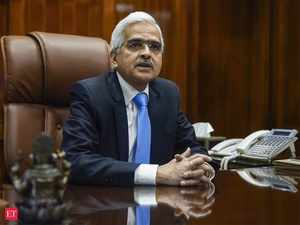
The March 27 package had delivered a 75 basis point reduction in the policy rate and launched the first TLTRO to ease pressure on bond yields.The Reserve Bank of India announced a second set of emergency measures to help struggling nonbanking finance companies (NBFCs) with cash infusions and persuading banks to lend funds rather than parking them by lowering the reverse repo rate. The central bank has also sought to open the funding tap for stretched microfinance institutions (MFIs), ease bad-loan recognition norms, help states borrow more as they seek to cope with Covid-19 containment and provide relief to banks on dividend payments as well as other conditions to free up money and ease liquidity.
The RBI’s commentary also pointed to room for further rate cuts, given that retail inflation is already down 170 basis points from its January peak and could ease further with a rise in the acreage under plantation.
“Such an outlook would make policy space available to address the intensification of risks to growth and financial stability brought on by Covid-19,” said governor Shaktikanta Das. “This space needs to be used effectively and in time.”
The steps on Friday follows the first set of measures that it announced on March 27–which included slashing the policy rate to a record—to bolster an economy set to slow dramatically in the wake of the Covid-19 pandemic and the ensuing lockdown.
Das pledged more rescue measures as and when needed. The new liquidity push aggregating to Rs 1 lakh crore of funding has been targeted at NBFCs and specific institutions such as the National Housing Bank (NHB), Small Industries Development Bank of India (Sidbi) and the National Bank for Agriculture and Rural Development (Nabard) to facilitate flow of credit to the needy and institutions lower down in the pecking order.
The second iteration of the Targeted Long Term Repo Operations (TLTRO) window will exclusively lend to NBFCs, to the tune of Rs 50,000 crore, with a similar amount going toward refinancing financial NHB, Sidbi and Nabard. The first TLTRO that was announced on March 27 saw banks channeling most of the money raised to top-rated borrowers.
The central bank granted a freeze on bad loan recognition for three months beginning March 1, a step that will help borrowers stressed even before Covid-19 struck. They can avail of moratorium benefits—which were announced on March 27–and prevent banks from declaring them as delinquent.
“Should there be additional requirement, depending on actual utilisastion of funds provided by the RBI, if there is a further requirement, the RBI will assess and take further measures for liquidity support,’’ Das said in his televised address. “The RBI will monitor the evolving situation continuously and use all its instruments to address the daunting challenges posed by the pandemic.”
Das cut the reverse repo rate, at which the central bank lends to banks, by 25 basis points to 3.75% to push banks to lend to customers instead of parking funds with the RBI. All other rates remain unchanged.
“The reduction of the reverse repo rate amid significant surplus interbank liquidity is equivalent to a rate cut,” said Anubhuti Sahay, economist at Standard Chartered Bank. “While expanding the eligible entities for TLTRO, funds to NBFCs and MFIs should be helpful, market expectations of more decisive measures persist.”
Investors welcomed the measures, stepping up purchases of stocks and bonds, although some said more could have been done and that expectations are running high given the magnitude of the blow to economic activity.
The benchmark Sensex ended 3.22% higher at 31,588.70 points, while the 10-year government bond yield were seven basis points lower than Thursday’s close. The rupee gained 0.60% to close at Rs. 76.40 to the dollar Friday. A basis point is 0.01 percentage point.
Further RBI action may depend on the stimulus plan that the government is said to be working on.
“The central bank is likely awaiting clarity on further fiscal stimulus and the consequent increase in borrowings required to finance the higher deficit, before gauging the need and scale of bond purchases,’’ said Radhika Rao, economist at DBS.
To ensure that the banking system remains on a sound footing, the RBI directed all banks to scrap plans to declare dividends to shareholders. This will be reviewed after the September quarter financials are finalised.
It eased the liquidity coverage ratio, the proportion of liquid assets that banks need to maintain—pegged to 30 days of likely outgo–to 80% from 100%. This will be restored in two phases—to 90% by October 1 and back to 100% by April 1 next year, the RBI said. The governor said the regulator was mindful of the need for banks to maintain fiscal stability.
“We are cognizant of the risk build-up in banks’ balance sheets on account of firm-level stress and delays in recoveries,” Das said. “With the objective of ensuring that banks maintain sufficient buffers and remain adequately provisioned to meet future challenges, they will have to maintain higher provision of 10% on all such accounts under the standstill.”
The March 27 package had delivered a 75 basis point reduction in the policy rate and launched the first TLTRO to ease pressure on bond yields.
Das also addressed the rising borrowing costs of states, which have seen a spike in recent days due to the thin attendance of primary dealers, banks, and insurers at their offices. He raised the short-term borrowing limit for states under the Ways and Means Advances (WMA) “by 60% over and above the level as on March 31, 2020, to provide greater comfort to the states for undertaking Covid-19 containment and mitigation efforts, and to plan their market borrowing programmes better.”
The RBI had announced an increase in the WMA limit of states by 30%. The increased limit will be available until September 30.
Source: indiatimes.com

